

AI Agents in Business: A Practical Overview
Dr Umair Ali Khan, 8.5.2025
Understanding AI agents and their value for businesses, minus the hype.
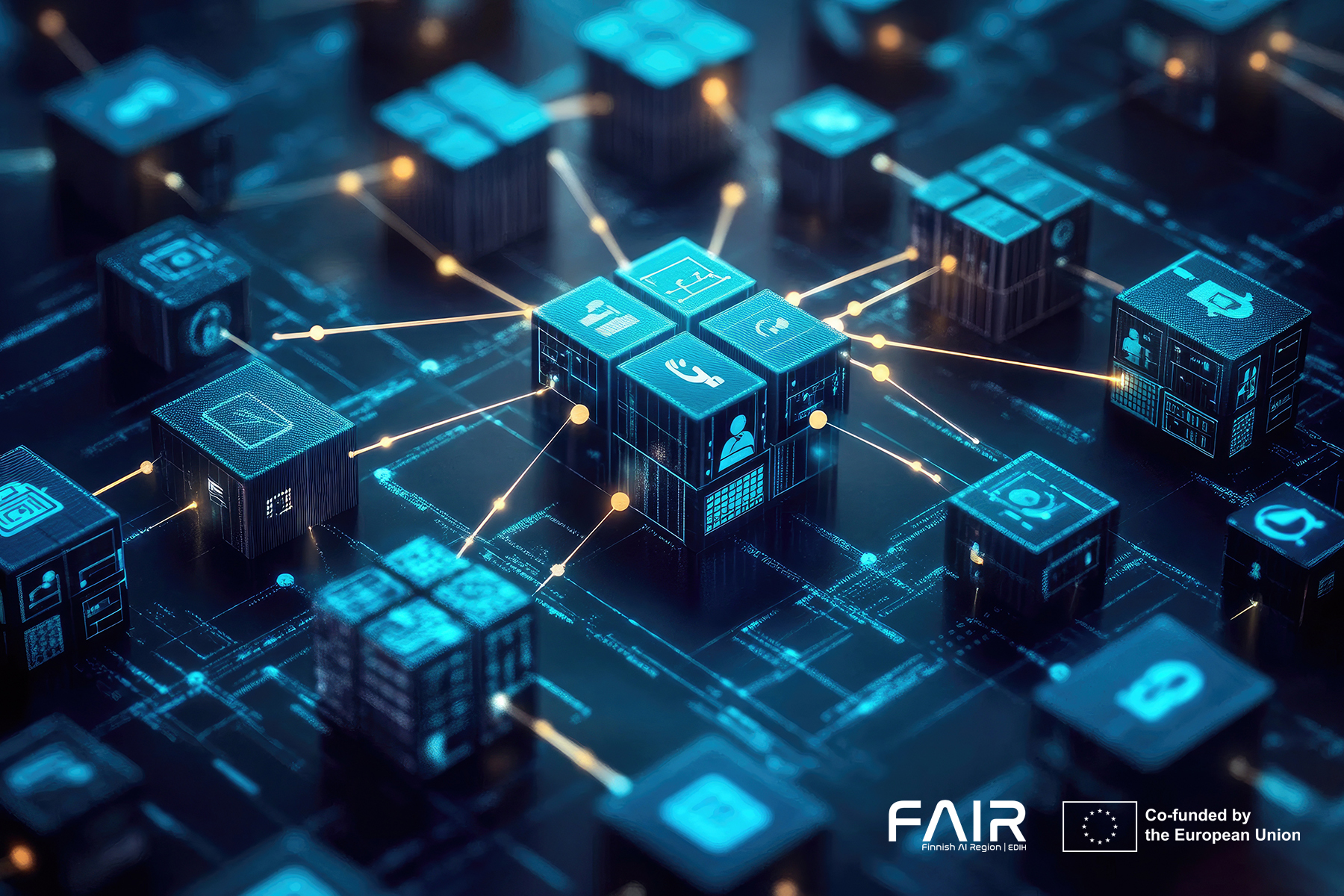

AI agents have emerged as a hot topic in business and tech circles. These agents are autonomous programs powered by AI that can carry out tasks or make decisions on behalf of a user. Unlike a standard chatbot that only responds to questions, an AI agent can take actions, for example, gathering information from multiple sources, using software tools, or even collaborating with other AI agents with minimal human intervention.
This has huge potential for automating workflows and enhancing human productivity. Business leaders are hearing promises of AI agents writing reports, researching markets, or handling routine decisions. But along with excitement comes confusion and hype. What exactly are AI agents? How do they work? And importantly for businesses: what are they useful for today, and where does reality fall short of the hype?
In this article, I explain how AI agents work, the tools used to build them, and where they are being used in business. I cover common use cases, clear up some of the hype, and share practical ways companies can benefit.
Technology Overview: How AI Agents Work
An AI agent is a software system designed to interact with its environment, gather information, and take actions on its own to achieve a goal set by a human. While the goal is defined by people, the agent decides which steps to take to reach it (Amazon Web Services, n.d; Caballar & Stryker, 2025). AI agents often use large language models (LLMs) to reason, plan, and act to achieve a goal (Varshney, 2023).
Instead of just generating an answer to a single prompt, an AI agent can break down a complex objective into subtasks, execute those subtasks (by calling software tools or searching for information), and adjust its plan based on the results. In essence, it’s like a digital assistant that can make decisions and carry out multi-step processes without needing step-by-step instructions for each action. For example, in a complaint resolution center, an AI agent handling customer queries might ask follow-up questions, search internal documents, and provide answers. Based on the interaction, it can decide whether to solve the issue itself or escalate it to a human agent.
Consider another example of an automated sales proposal or quotation generation – a recurring use case encountered during my AI consultancy with companies in the Finnish AI Region (FAIR) project. Sales proposal or quotation generation in manufacturing companies is a cumbersome task. It requires understanding customer documents, referring to company guidelines and pricing schemes, generating the proposal, and verifying it.
An AI agentic system can extract key details from the client’s request document, retrieve internal pricing guidelines and terms from company files, apply relevant rules or discounts, and generate a draft proposal using a predefined company template. It could then verify the content for accuracy, such as matching product names, pricing tiers, and formatting, and make corrections if needed. If something is missing or unclear, the agent could decide to check other internal documents or flag the issue for review.
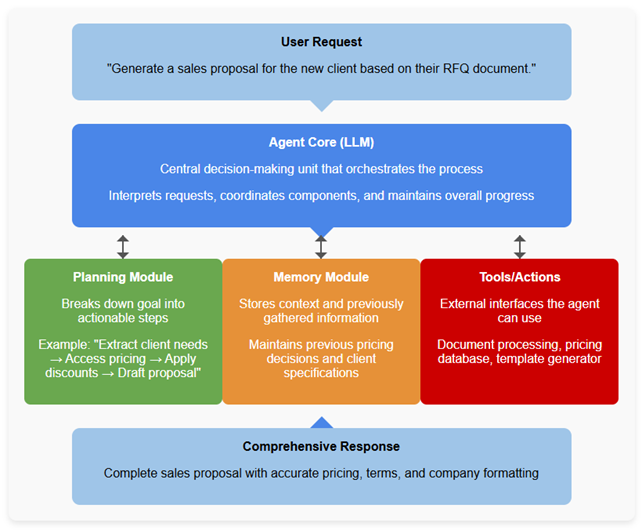
These components work together in an iterative loop. The agent core sets a plan (with the planning module), executes an action via a tool, gets the result, updates its memory, and then decides the next step. It continues this perceive-plan-act cycle until the task is complete or a goal is reached (Caballar & Stryker, 2025). Crucially, after finishing, a sophisticated agent can also learn from the outcome, storing what it learned in memory so it might do better next time (Caballar & Stryker, 2025).
Code-Based vs. No-Code Frameworks
AI agents can be built using either code-based or no-code tools. Code-based frameworks like LangChain and AutoGen let developers create flexible, custom agents with programming (Caballar & Stryker, 2025). No-code platforms like CrewAI, AutoGen Studio, and Google’s Vertex AI Agent Builder let non-programmers design agents through simple interfaces (Caballar & Stryker, 2025; Google, 2023; Viebrock, 2023). While no-code tools are easier and faster to use, they offer less flexibility. Many businesses use both approaches, starting with no-code and later moving to code for advanced needs.
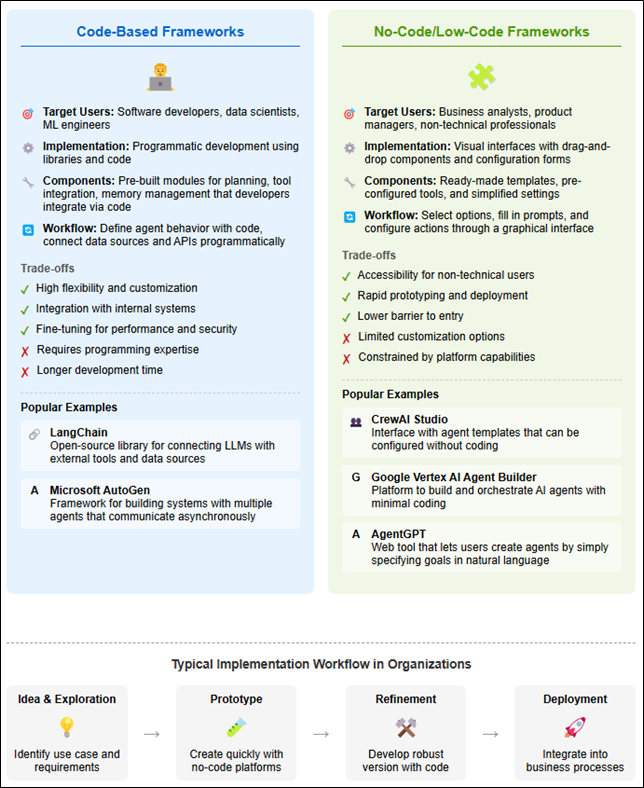
Selecting an AI agent framework involves weighing several factors. The level of technical expertise available influences whether a code-based or no-code approach is more suitable. Code-based options require programming skills, while no-code platforms are designed for non-technical users. Customization needs may steer the decision toward code-based frameworks for more complex solutions.
Time constraints can also shape the choice, with no-code tools offering faster deployment and code-based options typically needing longer development. Other important considerations include integration with internal systems, security and compliance requirements, especially when handling sensitive data, and the ability to scale for future needs.
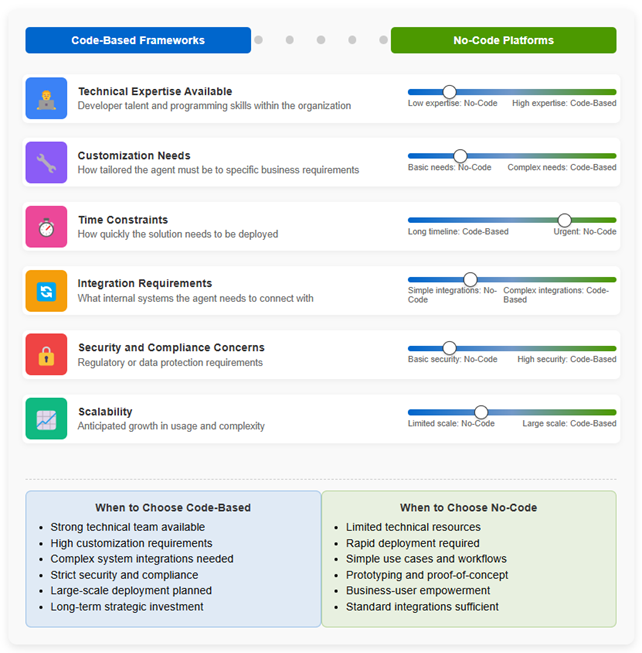
Current Business Applications
AI agents are being used across industries to save time, improve analysis, and automate tasks. A common use is automated report generation. For example, agents can read contracts and financial reports to produce a vendor risk summary in minutes instead of hours, with humans reviewing the output (Korolov, 2024). Similarly, OpenAI’s “Deep Research” agent can search the web, gather data, and generate full reports with citations (Simmering, 2025).
Some companies use agents to process large volumes of documents. One firm now handles 90% of its documents through AI, significantly cutting down manual work (Korolov, 2024). Agents can also pull data from emails, PDFs, and databases to create summaries or trigger actions, and are widely used in HR to help answer employee questions (Korolov, 2024). These agents often use retrieval-augmented generation (RAG) to pull information from different systems and generate useful outputs like digests or recommendations. This is helpful in businesses with scattered data.
In market research, agents automate tasks such as tracking trends or comparing competitors. Analysts use the AI’s first draft and build on it. This speeds up research and keeps insights current (Viebrock, 2023). Similarly, agents can also handle diverse data types from spreadsheets to transcripts and images, making them useful for tasks like company briefings, legal discovery, or product development insights (Varshney, 2023). In operations, AI agents help automate workflows such as onboarding or IT troubleshooting. In customer service, they answer questions or even take actions like issuing refunds.
Workflow automation and productivity are top business use cases, cited by 60% of surveyed companies (Korolov, 2024). During my AI consultancy work, I’ve observed a significant surge in demand for AI agents for agentic RAGs that augment company-specific documents with LLMs and other tools, and automated document generation including sales proposals, quotations, legal advice, complaint reports, and patient summaries, to name a few.
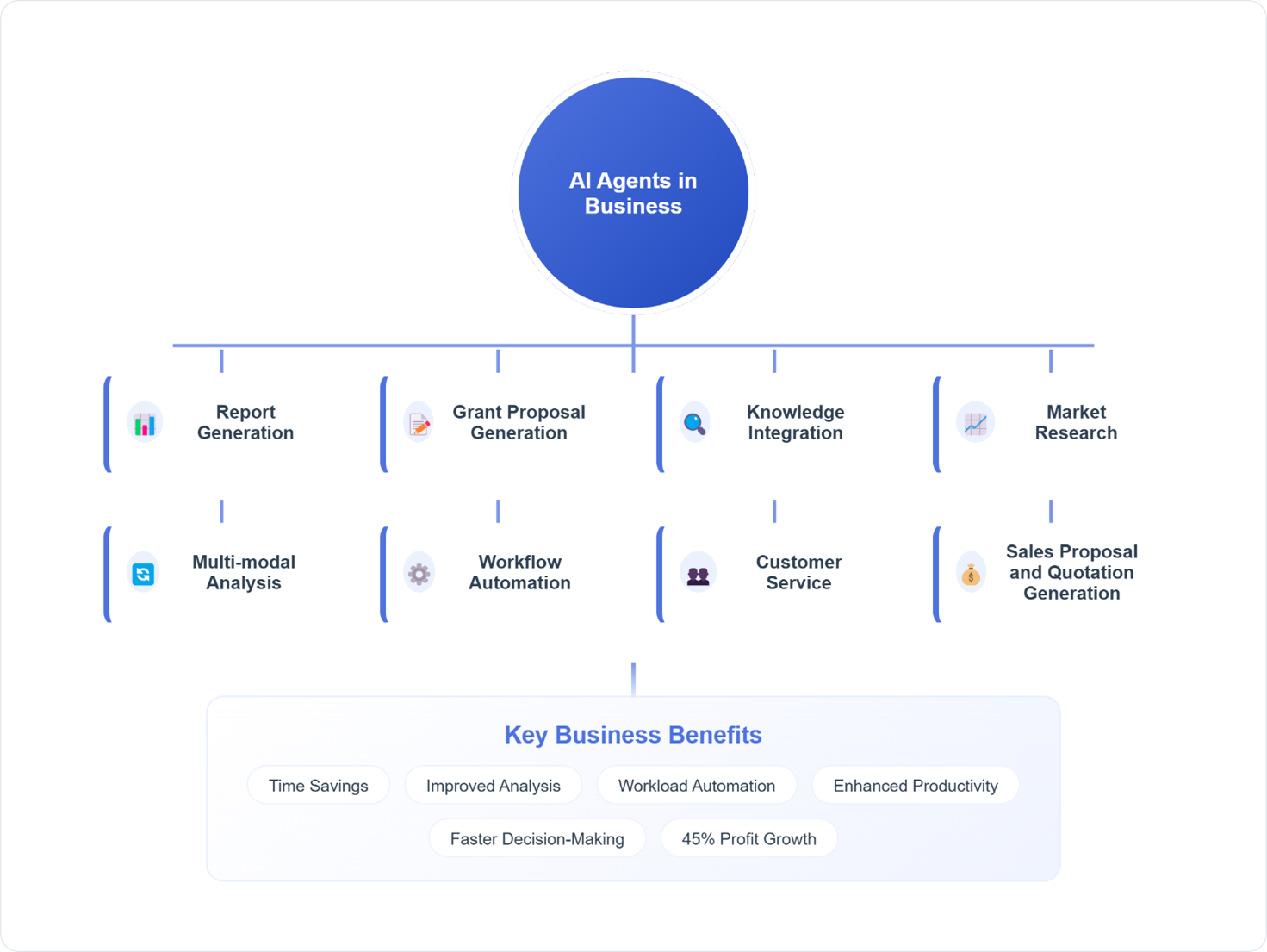
However, with these exciting deployments also come important questions: Are AI agents being applied in the right situations? Do they always deliver the expected value? This leads us into a discussion of hype versus reality.
Hype vs. Reality
AI agents are getting a lot of attention, but they are not needed for every task. Simpler AI tools often suffice for most of the routine problems. Agents are most useful for complex tasks that require reasoning and pulling data from multiple sources. Many companies still lack the skills to set up or manage them effectively.
Successful deployment needs clear goals, defined tools, and safeguards. Without these, agents can make mistakes or underperform (Simmering, 2025). Some use cases add little value, for instance, using an agent to schedule meetings when a calendar tool would do. AI Agents are more useful for tasks that are hard to automate otherwise, such as processing large document sets or combining insights from various sources (Romano, 2025).
The concept of AI agents is currently being overhyped. Many AI vendors are branding nearly every application as an “AI agent” to stay in line with trends, even when agentic features aren’t necessary. At the same time, some companies are eager to adopt AI agents without a solid understanding of core AI or machine learning principles.
This often results in failed projects that deliver little value or productivity gains. In my AI consultancy work, I frequently meet companies that want to build custom solutions simply to query specific business documents. In most of these cases, effective RAG techniques are sufficient, and full agentic workflows are not needed.
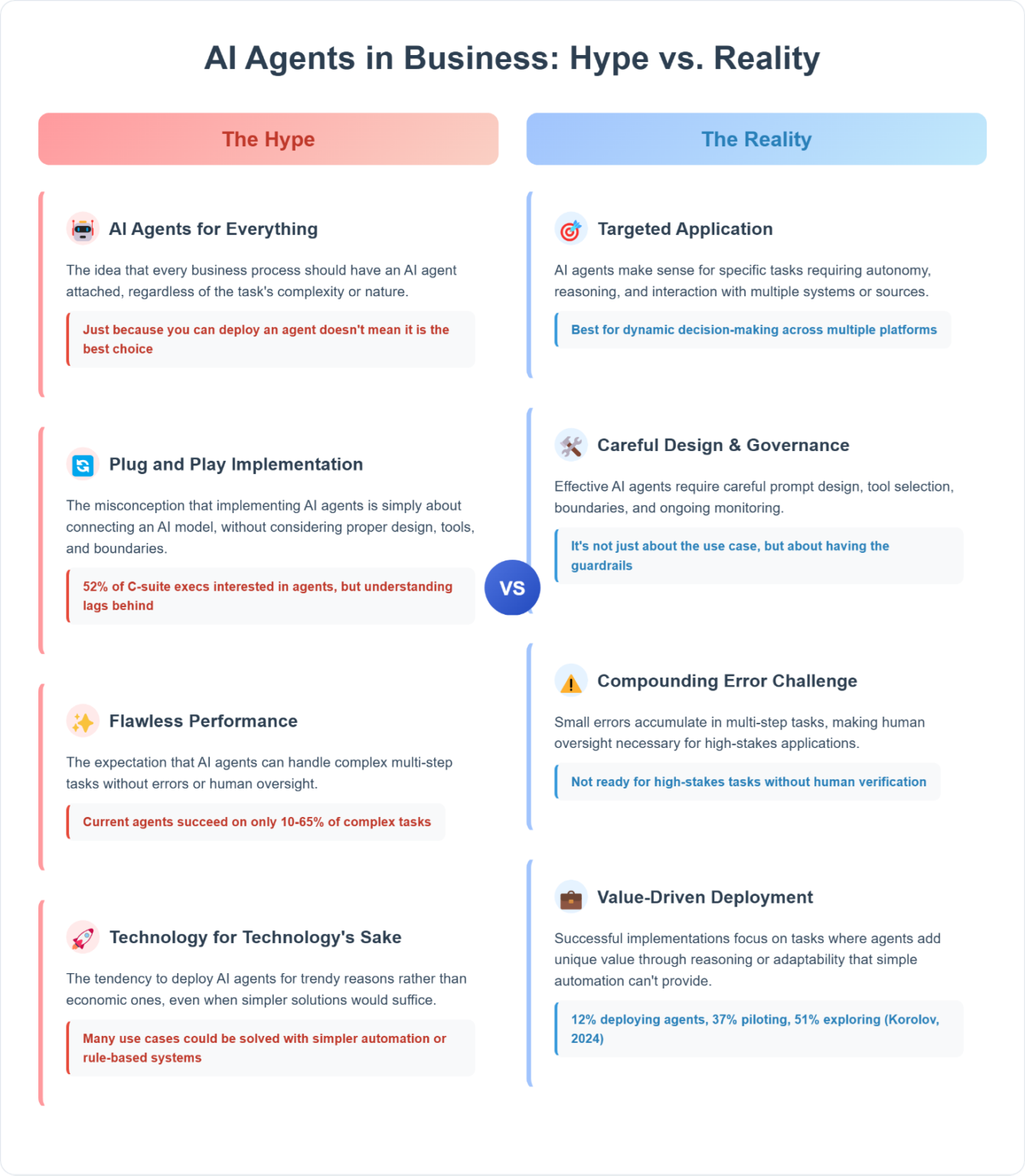
Opportunities and Possibilities
AI agents offer several opportunities for businesses. For instance, AI agents can be used to monitor vendors, systems, or customer sentiment and respond immediately. This opens up services like real-time risk alerts or automated quality control that were not feasible before. AI agents can embed expert knowledge into tools usable by non-experts. A legal agent, for instance, can help sales staff flag risky clauses in contracts. This helps companies do more with fewer experts and close skill gaps.
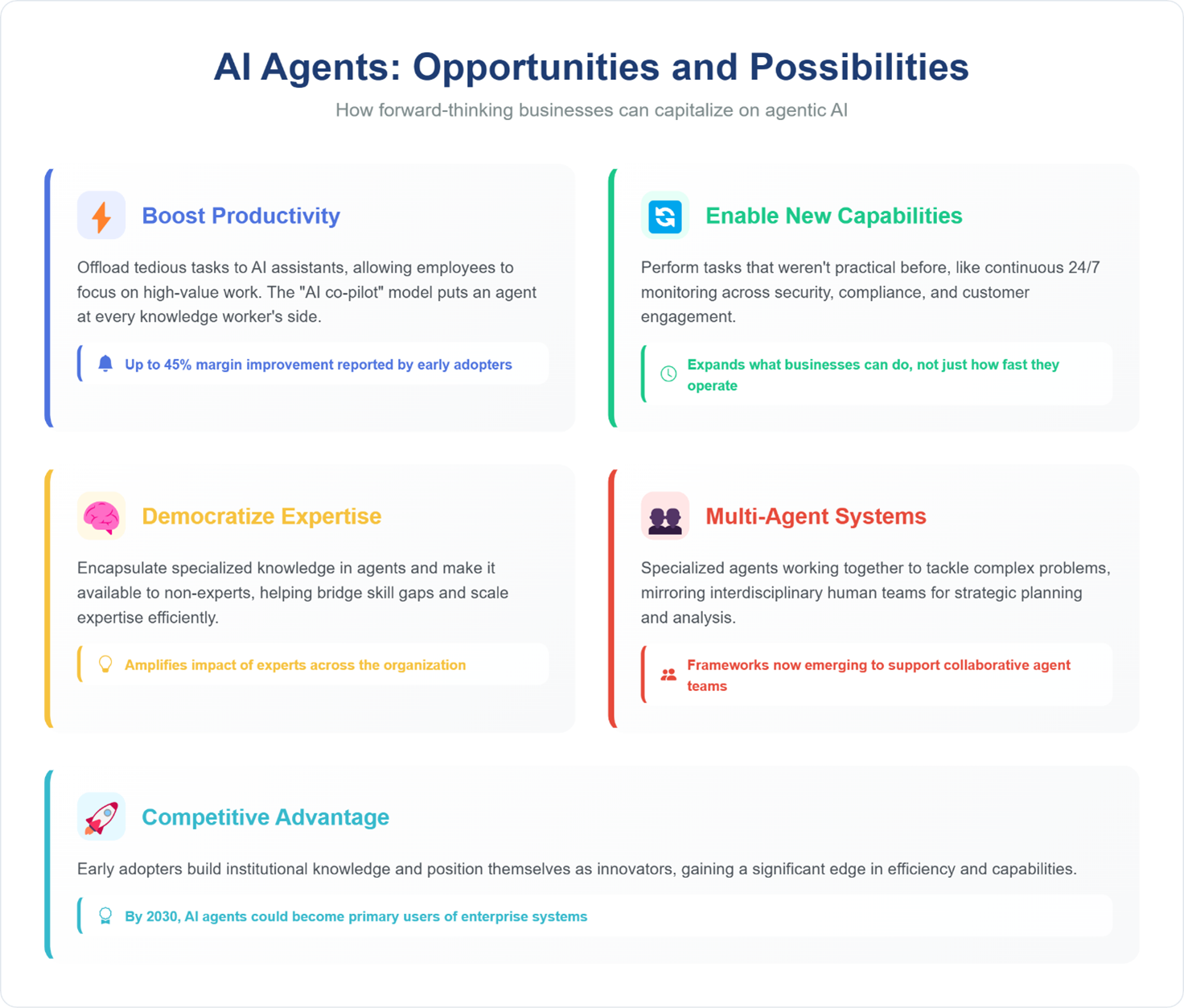
To benefit from AI agents, businesses should start with small, low-risk use cases, involve both technical and domain experts, and ensure strong oversight through human review and monitoring. It is important to train staff, stay updated on tools, and address ethical and compliance concerns. A thoughtful, incremental approach helps unlock real value while minimizing risks.
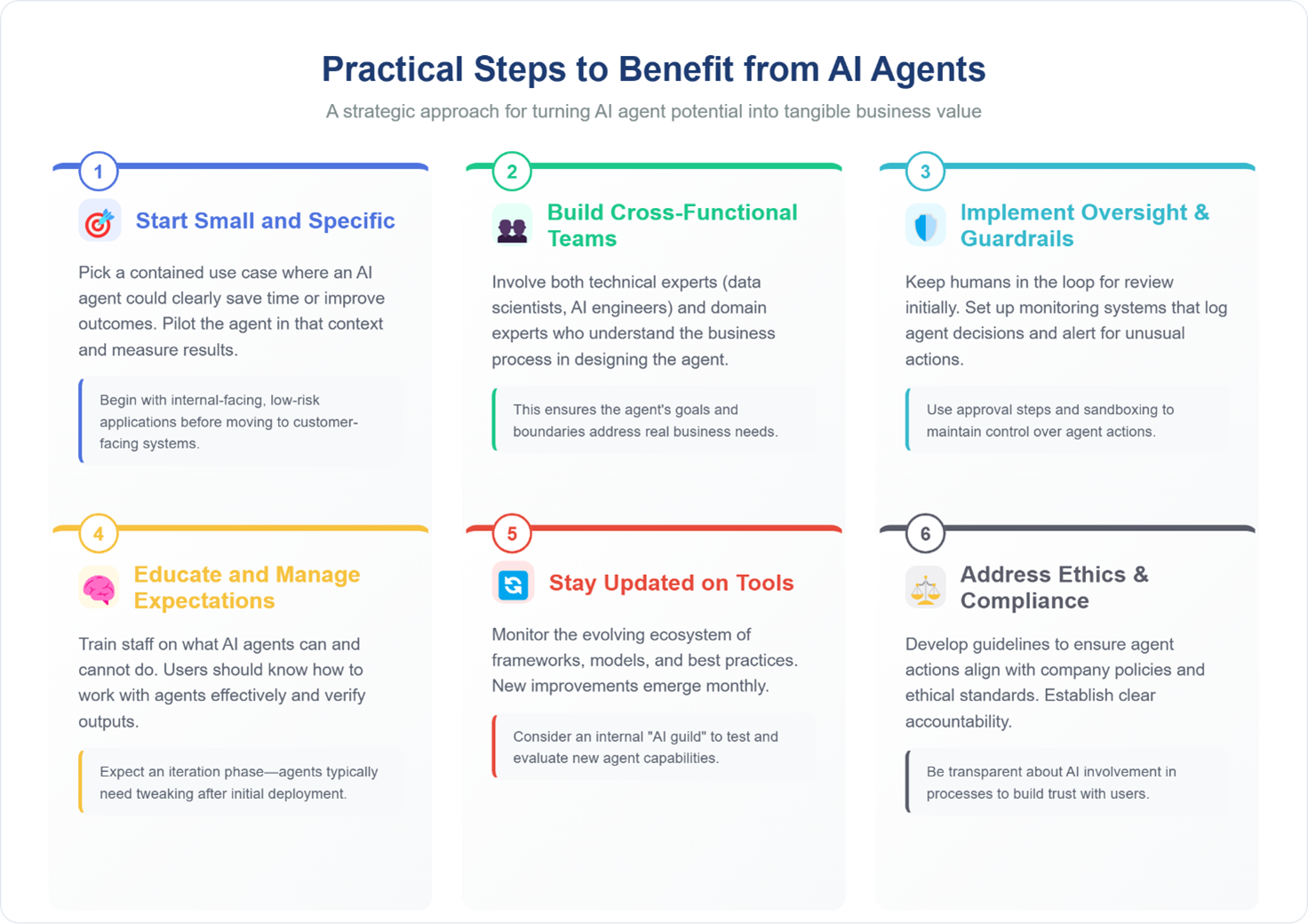
Key Takeaways
AI agents mark a shift from simple question-answering tools to autonomous systems capable of handling complex, multi-step tasks with minimal supervision. In business, they are already improving tasks like report writing, data analysis, and workflow automation. However, they are not suited for every situation.
Effective use requires choosing the right problems, starting small, maintaining oversight, and combining AI capabilities with human judgment. As the technology matures, staying flexible and informed will help businesses get the most value. When applied thoughtfully, AI agents can improve productivity and open up new ways of working.
Building a fully autonomous system is not advisable, as human involvement remains an essential element in agentic workflows. Before committing to critical tasks such as automatic payments, sending emails, resolving complaints, or making significant decisions, AI agents should involve humans for validation and verification. Additionally, including correction, validation, or corroboration steps in the agentic workflow is always recommended.
Knowledge extracted by one AI agent should be corroborated by another agent for verification and accuracy, while reports generated by agents may benefit from being checked by secondary agents to ensure correctness. This multi-layered approach, combining human oversight with cross-agent verification, creates more reliable and trustworthy AI systems.
Contact

Dr. Umair Ali Khan
Senior Researcher
+358 29 447 1413
umairali.khan@haaga-helia.fi
References
Amazon Web Services. (n.d.). What are AI agents? Retrieved April 19, 2025, from https://aws.amazon.com/what-is/ai-agents/
Caballar, R. D., & Stryker, C. (2025). AI agent frameworks: Choosing the right foundation for your business. IBM Think Blog. https://www.ibm.com/think/insights/top-ai-agent-frameworks. Accessed April 19, 2025.
Varshney, T. (2023). Introduction to LLM Agents. NVIDIA Technical Blog. https://developer.nvidia.com/blog/introduction-to-llm-agents/. Accessed April 19, 2025.
Korolov, M. (2024). 5 top business use cases for AI agents. CIO. https://www.cio.com/article/3843379/5-top-business-use-cases-for-ai-agents.html. Accessed April 19, 2025.
Romano, S. (2025). Key questions to address when implementing agentic AI solutions. LinkedIn Articles. https://www.linkedin.com/pulse/key-questions-address-when-implementing-agentic-ai-solutions-romano/. Accessed April 19, 2025.
Simmering, P. (2025). When (Not) to Use Agentic AI. Simmering.Dev Blog. https://simmering.dev/blog/agentic-ai/. Accessed April 19, 2025.
Viebrock, S. (2023). AI Agents: How to Enhance Your Market Research. O8 Agency Blog. https://www.o8.agency/blog/AI-Agents-Elevating-Market-Research-with-Advanced-AI-Tools. Accessed April 19, 2025.
Google. (2023). Vertex AI Agent Builder – Build and orchestrate enterprise-grade multi-agent experiences. Google Cloud. https://cloud.google.com/products/agent-builder. Accessed April 19, 2025.


Finnish AI Region
2022-2025.
Media contacts